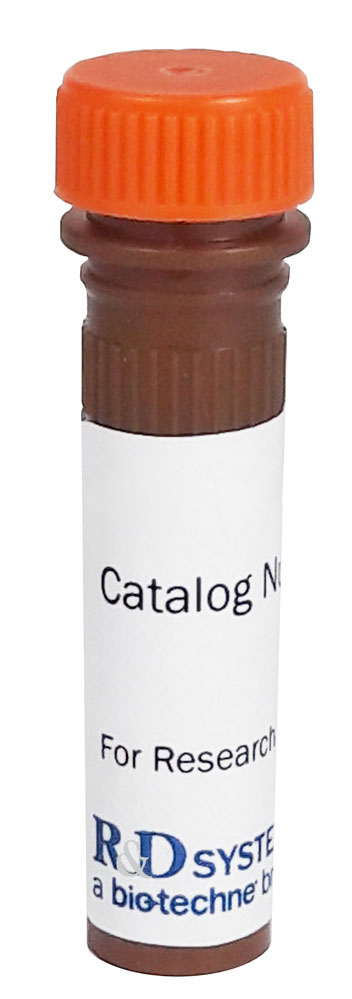Rat IL-9 Biotinylated Antibody Summary
Gln19-Ala144
Accession # NP_001099217
Customers also Viewed
Applications
Please Note: Optimal dilutions should be determined by each laboratory for each application. General Protocols are available in the Technical Information section on our website.
Preparation and Storage
- 12 months from date of receipt, -20 to -70 °C as supplied.
- 1 month, 2 to 8 °C under sterile conditions after reconstitution.
- 6 months, -20 to -70 °C under sterile conditions after reconstitution.
Background: IL-9
Rat interleukin-9 (IL-9; also T-cell growth factor P40 and MEA) is a 20‑30 kDa secreted glycoprotein that belongs to the IL-7/IL-9 family of hematopoietic cytokines. It is best considered an atypical Th2-type cytokine (1‑4). Rat IL-9 was initially isolated from the 4437A rat thymoma cell line (5). The IL-9 precursor is 144 amino acids (aa) in length and contains an 18 aa signal sequence plus a 126 aa mature segment (5). An extended, 219 aa alternate precursor form is reported in GenBank (Accession # XP_001068265). It shows a 113 aa substitution for the first 38 aa of the standard form. Its significance is unknown. Mature rat IL-9 is 75%, 74% and 58% aa identical to cotton rat, mouse and human IL-9, respectively (6‑9). There is variability in cross-species reactivity. Canine and mouse IL-9 are purportedly active on human cells (9‑11), while human IL-9 is inactive on mouse cells (9). Cells reported to express IL-9 include activated CD4+ T cells and eosinophils (12, 13). The receptor for rat IL-9 is composed of the 62 kDa rat IL-9R alpha chain and the 64 kDa rat common cytokine receptor gamma -chain (5, 14, 15). IL-9 is suggested to play a significant, but likely supporting role in allergy and asthma. Its synthesis is induced upon exposure to allergen (10, 13). Following release, it is known to upregulate IgE production by IL‑4‑stimulated B cells (16). It also stimulates mucin secretion and IL-13 production through a direct action on respiratory epithelium (10, 17). In the bone marrow, it promotes eosinophilia, likely through IL-5 induction (18, 19). And once produced, eosinophils are chemoattracted to the bronchi through the IL-9-induced secretion of eotaxin-1 by airway smooth muscle cells (20).
Product Datasheets
FAQs
No product specific FAQs exist for this product, however you may
View all Antibody FAQsIsotype Controls
Reconstitution Buffers
Staining Reagents
Supplemental Cell Selection Products
Supplemental ELISA Products
Reviews for Rat IL-9 Biotinylated Antibody
There are currently no reviews for this product. Be the first to review Rat IL-9 Biotinylated Antibody and earn rewards!
Have you used Rat IL-9 Biotinylated Antibody?
Submit a review and receive an Amazon gift card.
$25/€18/£15/$25CAN/¥75 Yuan/¥2500 Yen for a review with an image
$10/€7/£6/$10 CAD/¥70 Yuan/¥1110 Yen for a review without an image






